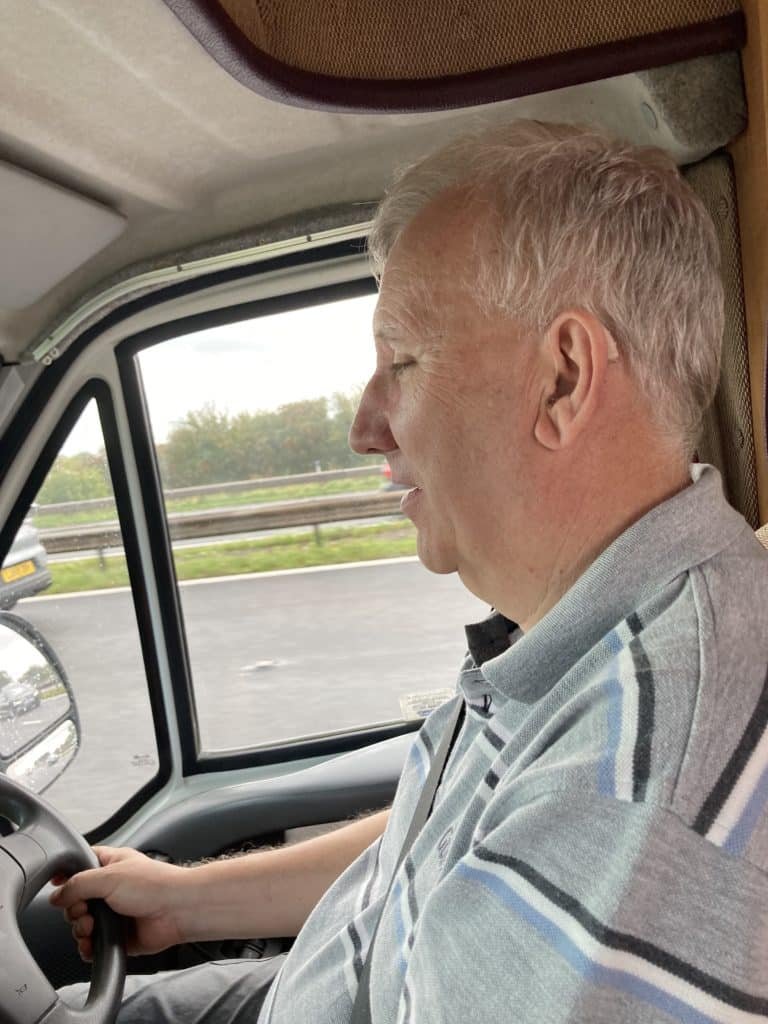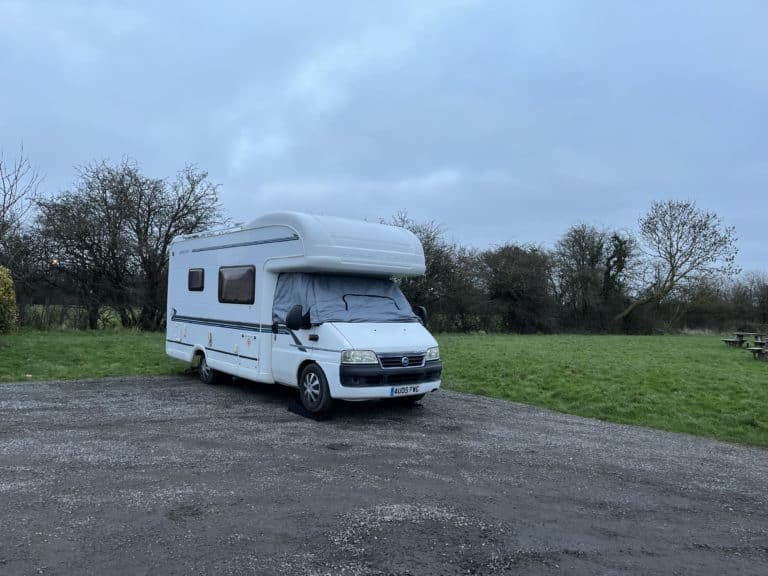Having swallowed the anchor, Ann and I decided to get the second-best thing to a Yacht. Yes, a motorhome. They are, however, just like a Yacht, expensive items of kit. Plus, there’s a shortage of them on the second-hand market.
After much deliberation, we chose an Autotrail Apache SE of 2005 vintage. There wasn’t much choice around our area, both Ann and I wanted a Hymer B544 but there wasn’t one for sale in the whole of the UK. So, an Apache it was.
We decided to stay at the Minehead Caravan and Motorhome Campsite. With a little help from our new Garmin Camper 890MT-D Satnav the route and the approach to the site was straightforward. More about this great piece of kit in another post so stay tuned.
Driving to Minehead via the M5 and the A39 is pretty straightforward. The A39 is a little winding but the Apache healed a steady course. Although it did look like there was a slight tailback behind us the A39 is mostly a 40 or 50 mph speed limit.
From Weston Super Mare down the M5 to junction 23. Here we took Bristol Road all the way to the traffic lights and turned right down Drove Road, ending up on the A39. Here I remembered that I wanted to check over the electrical system and in a senior moment, I had forgotten my voltmeter. So, I stopped at Wicks on East Quay to buy a voltmeter. Then it was the A39 all the way to Minehead and into the site.
The first task was checking in, the staff were friendly and helpful and the whole thing took five minutes. I was handed a map of the site on which four red rings were drawn around pitches that were available. There were however, two people ahead of us, so two of those four pitches would be gone.
Next, we pulled into the Motorhome service area to fill up with water, Ann and I were used to the Marina environment we expected a hose to be at the freshwater tap but there wasn’t one. Another note to myself “Buy hose”. A hose was on the grey water flush tap so we used this one to fill up.
Walking around the site I finally chose pitch number five for the reason of the easiest access. Ann removed the red cone from Pitch One so I could use it to start my reversing. Pulling in forward then reversing onto pitch five in the center of the white posts. We were slightly at an angle forward and back and I made a note to purchase some levelers.
Running out the electric cable and plugging in went without incident, as did making a nice cup of tea, and setting up the table and chairs outside. Lovely. Lunch then an hour and a half of measuring the DC and AC system for faults. The 12-volt batteries were shot, and the main fuse from the relays had melted suggesting the batteries were not accepting the charge that the alternator was supplying. The resistance in the batteries was just too much. The alternator was 90 amp, quite good for a van. On the boat, I had a 120-amp alternator with a smart- regulator. I’m going to look into adding one of these smart regulators to the Apache. But I will leave this on the to-do list for the winter. Stay tuned for that post.
Sitting on the port side of the Apache I noticed a drip coming from a stop cock, looking more closely it revealed the fresh water drain hose was leaking. As I was glancing under the van I saw that the grey water hose was also leaking at a steady drip, drip, drip rate. So, I place a bucket under this to dispose of later in the service area. Looks like I will have to replace both hoses as soon as possible. Oh, well something else I did not pick up when I inspected the van at the dealers. Hopefully, it will only be the hose but who knows!
The rest of the day was spent walking into Minehead, eating ice cream and going to the Britania Pub for some refreshments and food. Both were delicious and I can recommend the pub for the lovely atmosphere and beer garden and the pub is dog-friendly.
A 500-Year Journey Through Minehead’s History
Nestled along the rugged coastline of Somerset, England, the town of Minehead boasts a rich history that spans over five centuries. From its humble beginnings as a fishing village to its evolution into a bustling seaside resort, Minehead’s story is one of adaptation, resilience, and transformation.
The roots of Minehead can be traced back to the late 15th century when it emerged as a small fishing hamlet. The town’s natural harbour provided a safe haven for fishing boats, which became the lifeblood of the local economy. As the years went by, Minehead grew in importance as a trading post for goods like wool, fish, and timber, connecting the region to broader markets.
In the 19th century, Minehead experienced a significant transformation with the rise of the Victorian era’s fascination with coastal retreats. The expansion of railroads enabled easier access to the town, making it a desirable destination for those seeking respite from urban life. The construction of elegant Victorian architecture, including grand hotels and charming cottages, mirrored the town’s newfound status as a fashionable seaside resort. Visitors flocked to the town’s sandy beaches and took in the fresh sea air, establishing a tradition of tourism that endures to this day.
One of the most iconic landmarks of Minehead is the striking Church of St. Michael, whose origins date back to the 14th century. With its impressive tower and intricate stained glass windows, the church stands as a testament to the town’s historical and religious significance. The medieval era also left its mark on Minehead through its narrow, winding streets and quaint cottages, offering glimpses into the town’s architectural heritage.
The 20th century brought both challenges and opportunities to Minehead. The outbreak of World War II cast a shadow over the town, as it did across the entire nation. Minehead played its part in the war effort, hosting military installations and contributing to various aspects of the struggle. After the war, Minehead experienced a resurgence in tourism, as people sought to rebuild their lives and find joy in simpler pleasures.
In more recent decades, Minehead has continued to evolve, adapting to changing trends and preferences. The town has embraced modern amenities while striving to preserve its historical character. Traditional events, such as the May Day Hobby Horse Festival, pay homage to Minehead’s heritage and draw locals and visitors alike to partake in the festivities.
Today, Minehead stands as a harmonious blend of its past and present. Visitors can explore the picturesque landscape that once attracted Victorian vacationers while enjoying contemporary comforts and attractions. The Exmoor National Park, with its sweeping moorlands and captivating wildlife, beckons nature enthusiasts to venture beyond the town’s boundaries.
The story of Minehead is one of a small fishing village that grew into a beloved seaside resort, weathering the storms of history and emerging stronger with each challenge. Its journey from a humble fishing hamlet to a vibrant tourist destination showcases the town’s ability to adapt, thrive, and maintain its unique character. As Minehead looks to the future, it does so with a deep appreciation for its past, a commitment to its present, and a sense of anticipation for the adventures that lie ahead.












